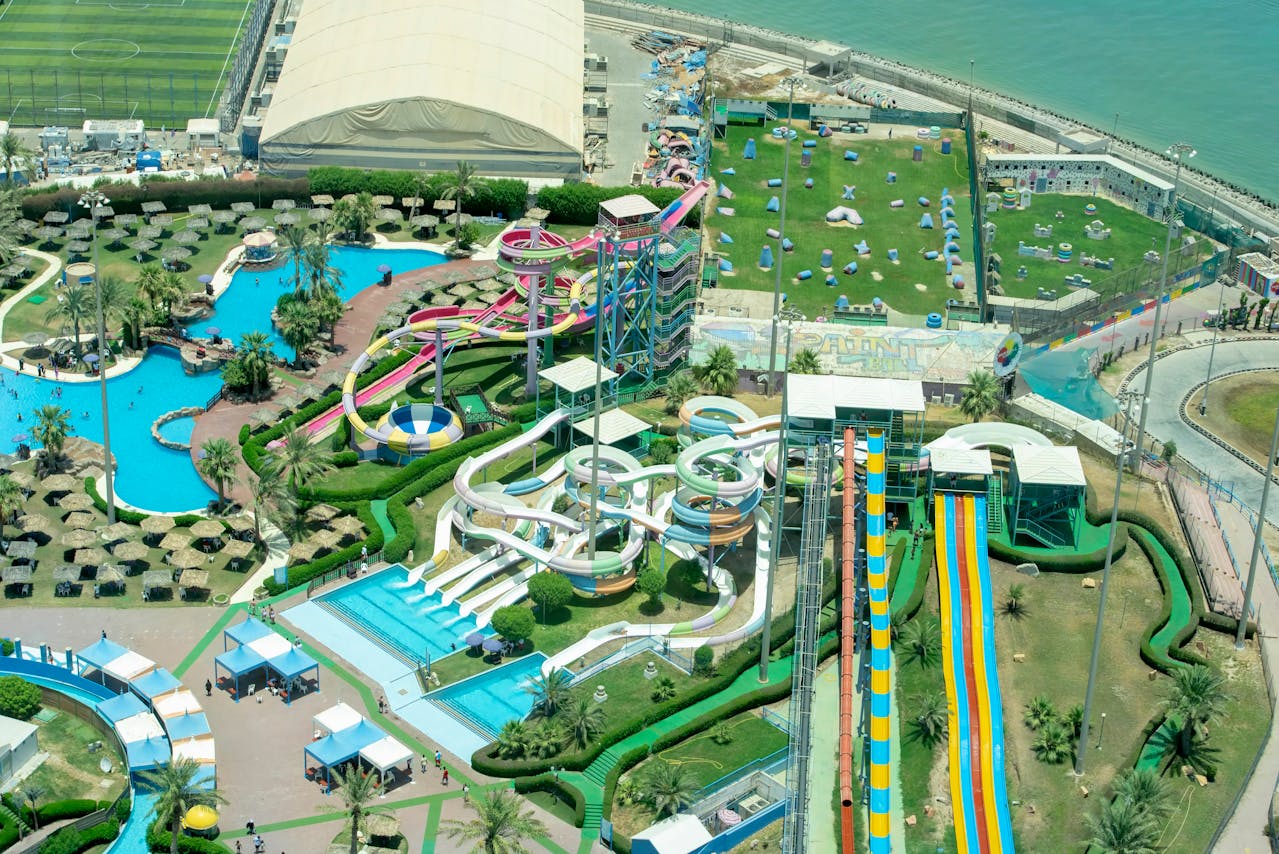Water parks across the United States generate over $3 billion in annual revenue, making effective public relations strategies essential for success in this competitive industry. Modern visitors expect more than just water slides and wave pools – they want personalized, tech-enabled experiences that combine excitement with relaxation. Recent studies show that 73% of water park visitors research destinations online before visiting, making digital PR initiatives more important than ever. The integration of new technologies and wellness-focused amenities has become a driving force in water park marketing, with successful parks seeing up to 25% increases in visitor satisfaction through these innovations.
PR Overview
- The Rise of AR and VR in Water Park Experiences
- Tech-Driven Innovations Reshaping Water Park Operations
- Wellness and Relaxation Features as Marketing Focal Points
- Digital Marketing Strategies for Modern Water Parks
- Safety and Cleanliness Communication
- Sustainability Initiatives in PR Strategies
- Measuring PR Success and ROI
- Conclusion
The Rise of AR and VR in Water Park Experiences
Virtual and augmented reality technologies are transforming how water parks engage with guests before, during, and after their visits. According to the International Association of Amusement Parks and Attractions (IAAPA), parks implementing AR/VR elements see an average 15% increase in guest engagement rates.
Six Flags White Water in Georgia introduced an AR-enabled mobile app that allows visitors to preview attractions through their smartphones. The app overlays digital information onto real-world views of rides and facilities, helping guests plan their day more effectively. This implementation resulted in a 20% reduction in guest complaints about wait times and improved overall satisfaction scores.
Virtual reality has found particular success in queue entertainment. Water World Colorado implemented VR headsets in their waiting areas, allowing guests to experience immersive underwater adventures while waiting for popular attractions. This addition reduced perceived wait times by 40% according to guest surveys.
Social media integration with AR features has proven particularly effective. Holiday World’s Splashin’ Safari created AR filters specifically for their attractions, resulting in a 35% increase in social media mentions and user-generated content. These shareable moments extend the park’s reach and create organic marketing opportunities.
Tech-Driven Innovations Reshaping Water Park Operations
Modern water parks are incorporating sophisticated technology systems to streamline operations and enhance guest experiences. The implementation of RFID wristbands at parks like Aquatica Orlando has reduced entry times by 60% while providing valuable data on guest movement patterns and preferences.
Smart queuing systems have become increasingly prevalent. Water parks using virtual queue technology report 30% higher guest satisfaction scores compared to traditional queuing methods. These systems allow visitors to reserve spots in line remotely, freeing them to enjoy other attractions while waiting.
Mobile apps with integrated payment systems have shown significant impact on guest spending patterns. Parks utilizing cashless payment systems report an average 23% increase in per-guest spending. These apps also enable real-time crowd monitoring and capacity management, helping parks maintain optimal guest flow throughout their facilities.
Wellness and Relaxation Features as Marketing Focal Points
The demand for wellness-focused amenities in water parks has grown significantly, with 65% of visitors expressing interest in relaxation areas according to a 2022 IAAPA survey. Successful parks are responding by creating dedicated zones that combine aquatic features with spa-like experiences.
Schlitterbahn New Braunfels transformed underutilized areas into wellness zones, complete with heated pools and massage services. This addition attracted a new demographic of visitors and increased average stay duration by 2.5 hours. Their marketing campaign highlighting these features resulted in a 28% increase in adult visitors during off-peak hours.
Wellness programming has become another successful marketing angle. Water parks offering morning yoga sessions and meditation classes report increased repeat visitation rates among local residents. Adventure Island in Tampa saw a 45% increase in season pass sales after introducing their “Wellness Wednesdays” program.
Digital Marketing Strategies for Modern Water Parks
Social media marketing has evolved beyond simple post scheduling. Successful water parks now employ comprehensive digital strategies that include influencer partnerships, user-generated content campaigns, and targeted advertising. Parks with active social media presence report 40% higher engagement rates with potential visitors.
Email marketing remains effective when properly segmented. Water parks using personalized email campaigns based on past visitor behavior see open rates 2.5 times higher than industry averages. These campaigns often highlight new features, special events, and exclusive offers based on individual guest preferences.
Video content has become increasingly important, with 85% of potential visitors watching videos before making travel decisions. Parks creating regular video content showing behind-the-scenes operations and attraction previews report higher pre-booking rates and increased social media following.
Safety and Cleanliness Communication
Modern PR strategies must address heightened guest concerns about safety and cleanliness. Water parks that prominently feature their safety protocols and cleanliness standards in marketing materials report 25% higher guest confidence levels.
Real-time updates about water quality and safety measures through mobile apps and digital displays have become standard practice. Parks implementing these communication systems report reduced guest concerns and higher satisfaction scores related to safety perceptions.
Sustainability Initiatives in PR Strategies
Environmental responsibility has become a key marketing point for water parks. Facilities implementing and promoting water conservation measures and renewable energy usage report positive feedback from 78% of guests.
Several parks have successfully marketed their transition to solar power and water recycling systems. These initiatives not only reduce operational costs but also appeal to environmentally conscious visitors, particularly among younger demographics.
Measuring PR Success and ROI
Modern water parks use sophisticated analytics tools to measure the success of their PR initiatives. Key performance indicators include social media engagement rates, online booking conversions, and guest satisfaction scores.
Mobile app data provides valuable insights into guest behavior and preferences. Parks using data-driven decision making for their PR strategies report 35% better returns on marketing investments compared to those using traditional methods.
Conclusion
The future of water park PR lies in the strategic combination of technology integration, wellness features, and effective digital communication. Success requires a balanced approach that addresses both the excitement seekers and those looking for relaxation. Parks should focus on implementing AR/VR experiences thoughtfully, while maintaining strong communication about safety and sustainability initiatives.
To stay competitive, water parks should:
- Invest in AR/VR technology that enhances rather than replaces traditional experiences
- Develop comprehensive digital marketing strategies that emphasize both thrills and relaxation
- Create and promote wellness-focused areas and programming
- Maintain transparent communication about safety and environmental initiatives
- Use data analytics to continuously refine PR strategies and measure success
By following these guidelines and staying current with emerging trends, water parks can create effective PR campaigns that drive visitor growth and enhance guest satisfaction in an increasingly competitive market.
Using Customer Transformation Stories To Create Compelling PR Narratives
Creating compelling narratives that resonate with audiences has become essential for supplement...
Emerging Trends In Water Park Public Relations Strategies
Water parks across the United States generate over $3 billion in annual revenue, making effective...
Public Relations For Dietary Supplement Compliance
Public relations plays a vital role in helping dietary supplement companies maintain FDA compliance...



